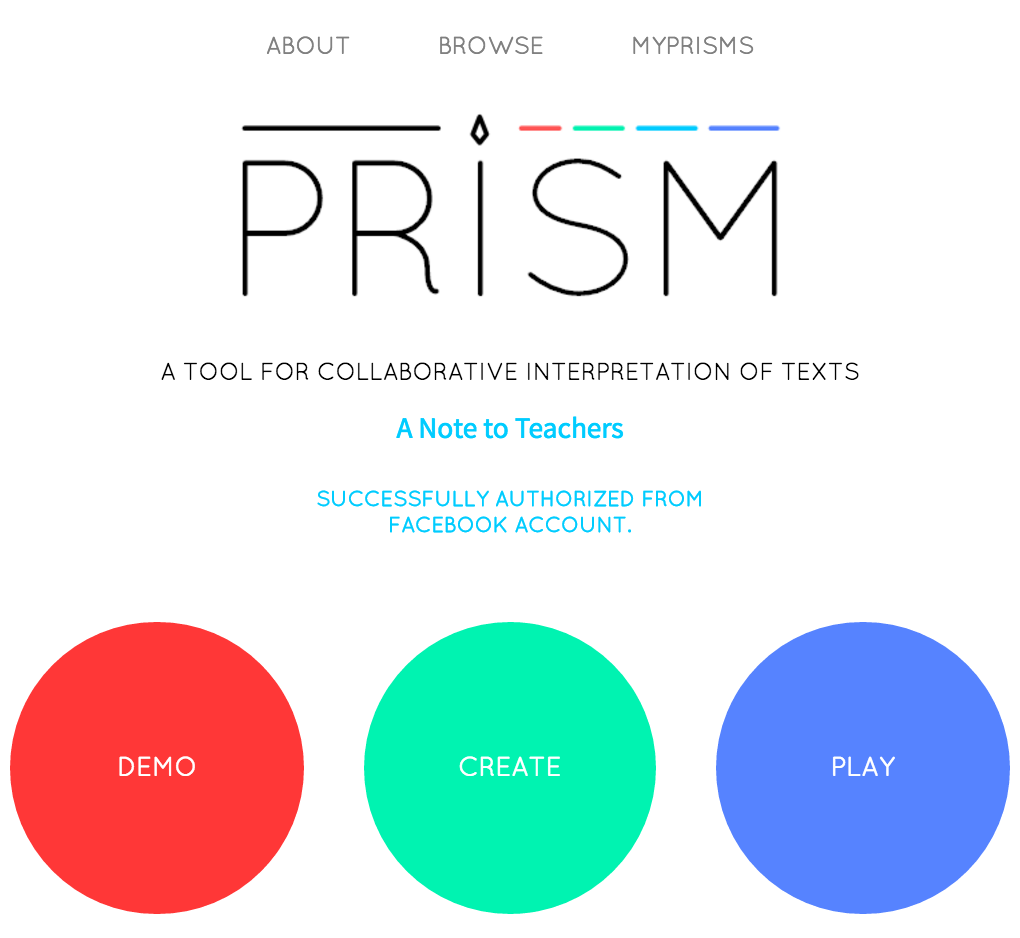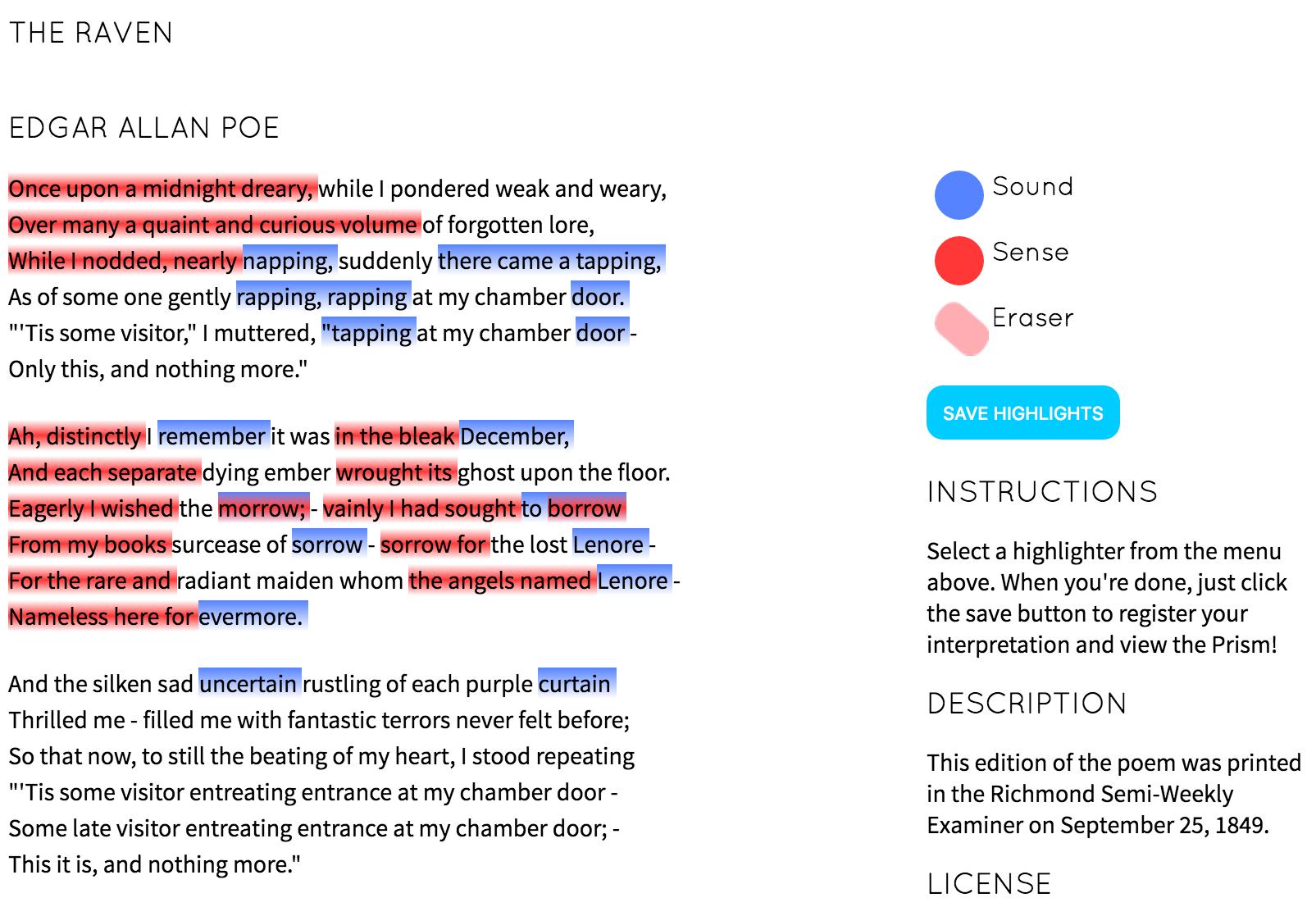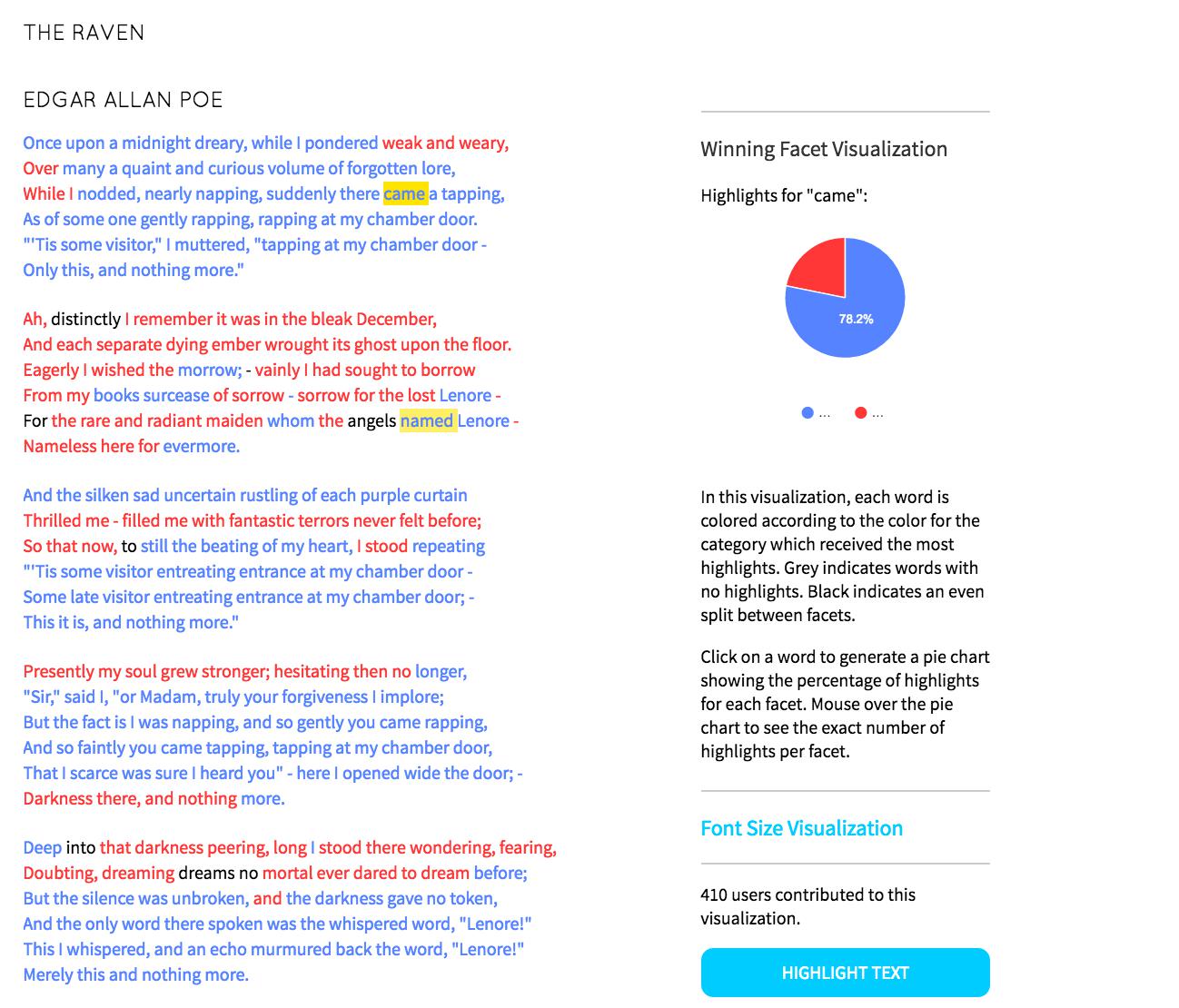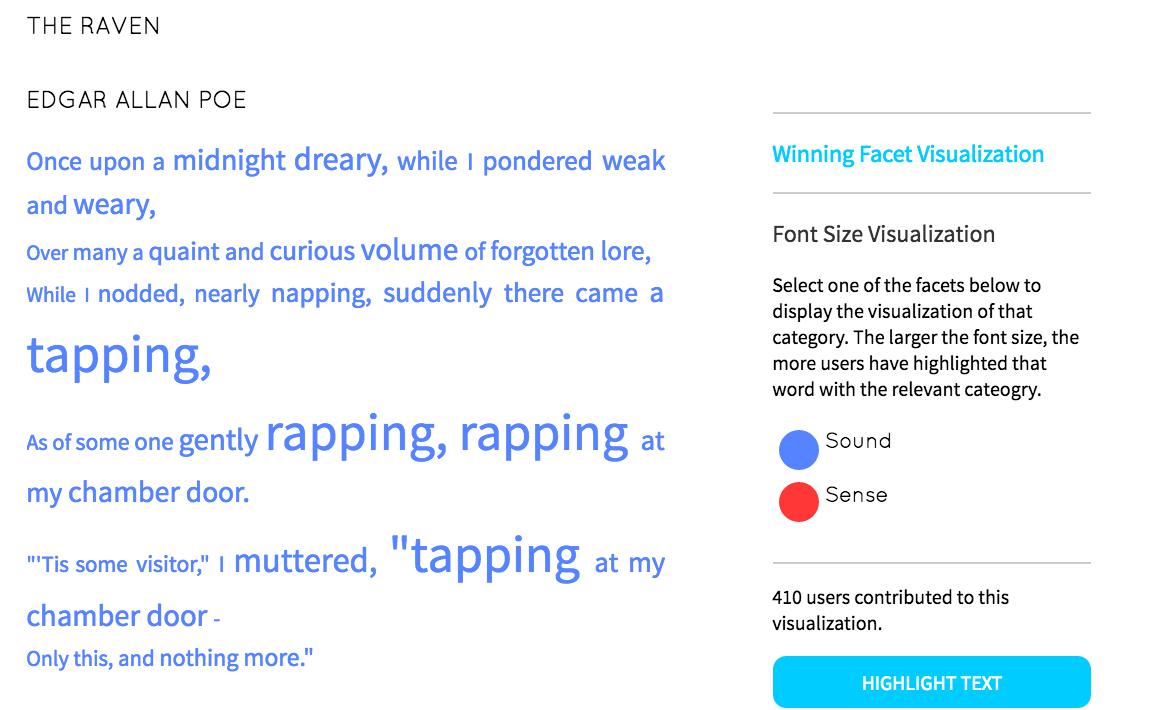Prism Part One
Prism is a digital tool that enables readers to think about how they interpret texts in new ways. The project grew out of a series of conversations and exercises carried out by Johanna Drucker, Bethany Nowviskie, and Jerome McGann at the University of Virginia. Every member of the group would receive a copy of a single text as well as a transparency and a few highlighters. One person would give the highlighters to the group and say something to the effect of, "OK. Read this passage, and mark passages that seem to suggest 'democracy' with the green highlighter and 'anarchy' with the blue." With the transparency laid over the passage, the readers would all mark their own copy as they read. The marking process would end at a certain point, and the transparencies would be collected.
The transparency game crystallizes a very basic element of textual analysis:
- When we close read, certain textual components - phrases, words, characters - make us interpret a document in a particular way.
The game asks you to make graphic representations of these decisions, to identify the words that make you think or feel a certain way. By lifting the transparency off the text, you are left with a series of colors that correspond to your reading of the document. You have traced the broad outlines of your interpretation onto the page.

Prism is a digital version of the same game. Given a choice between a few predetermined categories, Prism asks you to highlight a given text. In this Prism example, readers are asked to mark an excerpt from Edgar Allan Poe's "The Raven." By selecting one of the buttons next to the categories on the right, your cursor will change into a colored highlighter. Clicking and dragging across the text will highlight it in the same way that you might if you were reading a print version.

After you click "Save Highlights", the tool combines your markings with those everyone else who has ever read the same Prism text made to help you visualize how people are marking things. By default, Prism will bring up the winning facet visualization, which colors the text according to the category that was most frequently marked for each individual word. Clicking on an individual word will color the pie chart and tell you exactly what percentage the word got from each category.
 Seeing a graphic representation of the reading process might help you to notice things that you might not otherwise. For example, here you might notice that people tended to mark passages containing first person pronouns as "sense." Is it because "sense" implies thinking? Phrases like "I remember," "my soul grew," and "I stood there wondering" do suggest an emphasis on introspection, at the very least. Did you mark the same phrases, or did you select other passages?
Seeing a graphic representation of the reading process might help you to notice things that you might not otherwise. For example, here you might notice that people tended to mark passages containing first person pronouns as "sense." Is it because "sense" implies thinking? Phrases like "I remember," "my soul grew," and "I stood there wondering" do suggest an emphasis on introspection, at the very least. Did you mark the same phrases, or did you select other passages?
Prism comes with two visualizations baked into it. To change visualizations, click the "Font Size Visualization" button on the right sidebar. The font size visualization lets you see which parts of the text were more frequently thought of as belonging to a particular category: Prism resizes the text to reflect concentrations of reading. So in this example, where readers were marking for "sound," they tended to mark rhyming words more frequently.
 Makes sense, and you might have done the same. By selecting the other category, you could check out what readers tended to mark for "sense."
Makes sense, and you might have done the same. By selecting the other category, you could check out what readers tended to mark for "sense."
By design, Prism forces you to think more deeply about the categories that you are given for highlighting. The creator of this Prism wants you to mark for "sound" and "sense" - categories that relate to Alexander Pope's famous formulation of poetry from An Essay on Criticism. In it, Pope suggests that the sound of a poem should complement the underlying meaning of the poem. So the creator of this game wants you to try and pinpoint where these categories overlap and where they depart. You might not have known this context, though you might have intuited elements of it. Guided reading in this way might change how you would otherwise read the passage, and the absence of clear guidelines complicates your experience of the text.
- How would reading be different if you do not know the exact meanings behind the categories?